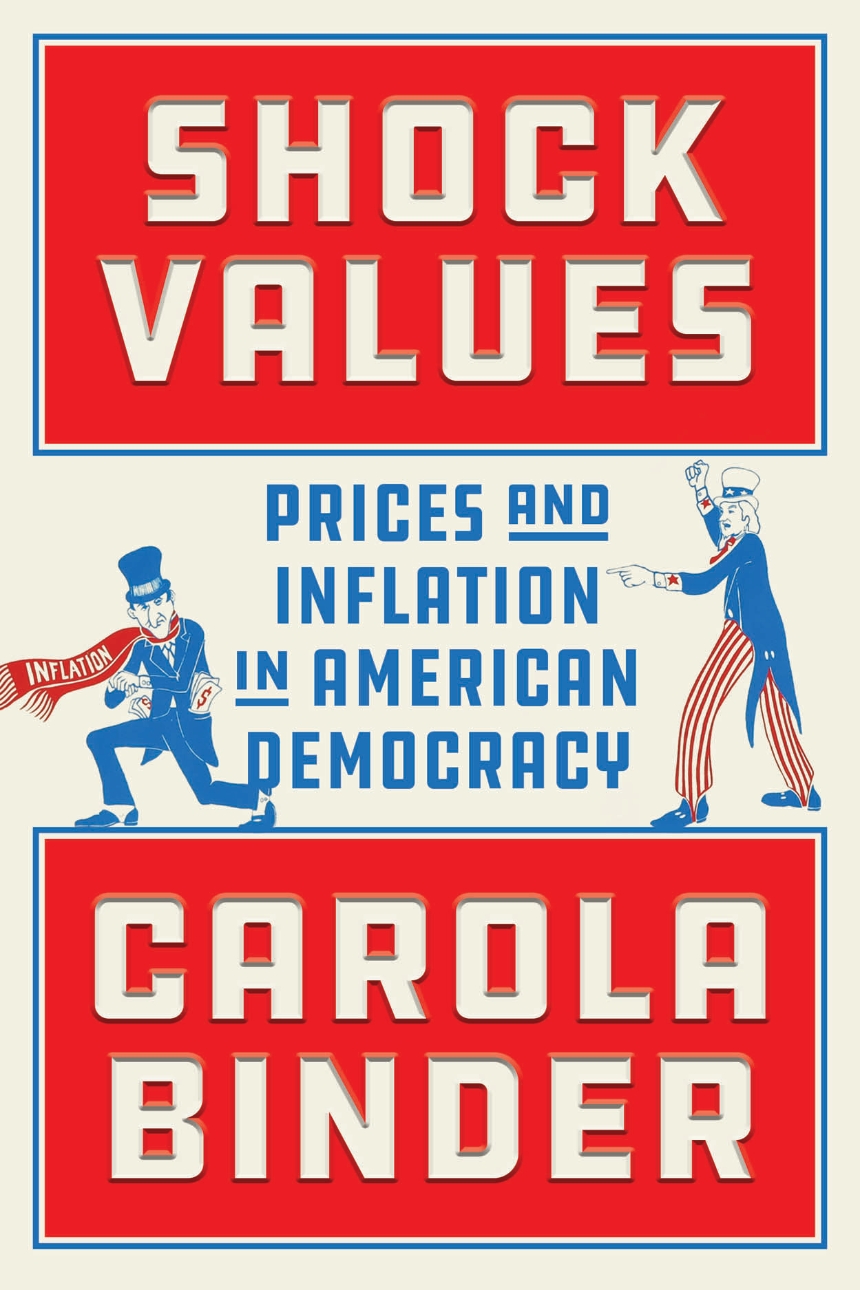Shock Values
Prices and Inflation in American Democracy
How inflation and deflation fears shape American democracy.
Many foundational moments in American economic history—the establishment of paper money, wartime price controls, the rise of the modern Federal Reserve—occurred during financial panics as prices either inflated or deflated sharply. The government’s decisions in these moments, intended to control price fluctuations, have produced both lasting effects and some of the most contentious debates in the nation’s history.
A sweeping history of the United States’ economy and politics, Shock Values reveals how the American state has been shaped by a massive, ever-evolving effort to insulate its economy from the real and perceived dangers of price fluctuations. Carola Binder narrates how the pains of rising and falling prices have brought lasting changes for every generation of Americans. And with each brush with price instability, the United States has been reinvented—not as a more perfect union, but as a reflection of its most recent failures.
Shock Values tells the untold story of prices and price stabilization in the United States. Expansive and enlightening, Binder recounts the interest-group politics, legal battles, and economic ideas that have shaped a nation from the dawn of the republic to the present.
352 pages | 6 x 9 | © 2024
Economics and Business: Economics--Government Finance, Economics--History
Reviews
Table of Contents
1. The Colonies and the Revolution
2. Financing the New Nation
3. The Jacksonian Era and the Civil War
4. The Money Question in the Postbellum Era
5. The Federal Reserve Act and World War I
6. Deflation and Stabilization
7. The Great Depression and the New Deal
8. World War II and the Office of Price Administration
9. The Korean War and the Treasury-Fed Accord
10. The Great Inflation
11. The Volcker Disinflation and the Greenspan Standard
12. Inflation Targeting and the Great Recession
13. The Pandemic and the Return of Inflation
14. Looking Back and Looking Ahead
Notes
Index
